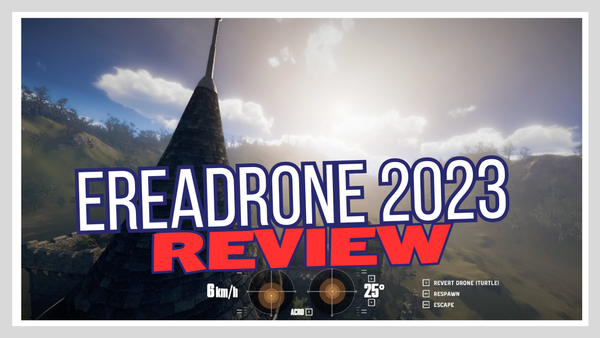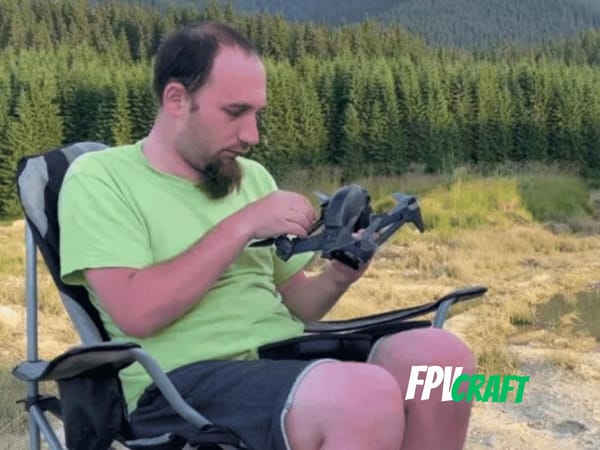Can you do Roof Inspections Using an FPV Drone?
Can you use an FPV drone to do any type of roof inspection? If yes, which type of FPV drones would be the most recommended?

Having an FPV drone means we can do stuff that was inaccessible to standard drones but at a greater risk. What about roof inspections? Can we do roof inspections using an FPV drone?
Yes, in fact, with some specific FPV drones, such as Cinewhoops, we can approach much closer and smoother to the roof to inspect as compared to a standard drone, but with the disadvantage that we are not able to change the camera angle for better inspection and other risks involved.
There are more than a few things to take into consideration when you want to use an FPV drone for a roof inspection. For this reason, we strongly recommend you keep reading.
What do we know of FPV drones, and how can they be used in roof inspections?
FPV drones are a type of drone controlled by drone pilots where the live image is transmitted directly into an FPV headset, and the overall controls may differ from the standard kind of drones.
This comes as a great advantage because having a headset when controlling your drone, you are able to spot details on the roof you cannot spot while the live image is on the mobile phone as compared to standard drones.
But there are disadvantages as well. More we will talk about later.
What type of FPV drones can you use for roof inspections?

We can use every type of FPV drone, but some drones are more challenging to maneuver than others.
For instance, a standard 5-inch quad would be tough to control for a roof inspection, especially in acro mode (or angle/horizon mode).
Instead, a cinewhoop may fly smoother than a 5-inch quad.
But what about using a microdrone for roof inspections?
A microdrone could be the solution in some situations where you intend to do roof inspection using an FPV drone because a microdrone, in particular, if this is cinewhoop style, can access spaces that no other drones can.
And the drone would remain more stable if you know how to control it in close proximity to the roof you want to inspect.
But a microdrone may come at a more significant disadvantage, such as instability in any wind conditions, lower camera quality due to its size, and low battery life.
Does a cinewhoop works better than a standard FPV drone for roof inspections?
If we compare it directly with a cinewhoop, you can safely approach more to the roof than with a standard FPV drone without the risk of crashing it because of the drone structure.
Moreover, because of the smooth and slow flight of a cinewhoop, you can even land on the roof slowly with no issues and take off at any time, jump from spot to spot to inspect, and so on.
Indeed, a cinewhoop will give you more flexibility than a standard FPV quad.
How does DJI FPV work for roof inspection?
DJI FPV drone is not a wrong choice because you can commute between normal and manual modes. But using the manual mode of DJI FPV for roof inspection is the worst decision ever.
Instead, using the normal mode of DJI FPV while observing through the DJI FPV Goggles is a fantastic way to inspect and gaze at details. But please remember, the sensors in normal mode will limit your approach to the roof as compared to a regular quad.
» Related: Can you fly DJI FPV in Normal Mode?
What are the risks of using an FPV drone for roof inspection?
What else do we need to know about using an FPV for this kind of job?
- For legal reasons, in most states and countries, using an FPV drone will require you to have a spotter near you, meaning you cannot legally do roof inspections only by yourself.
- It is easy to lose telemetry to the drone, which may not have GPS and RTH (return-to-home) functions.
- You won’t have any sensors active on your drone, and because you can get really close to the roof, you increase your risk of crashing your quad.
What are the disadvantages of using an FPV drone for roof inspections?
- Controlling an FPV quad (acro and other styles) is very difficult; therefore, crashing it is easy.
- Justifying the price of DJI FPV drone only for roof inspection is difficult. But if you aim for DJI Avata for roof inspections, that’s another story.
- The battery life of a standard quad is shallow, and in general, you can fly an FPV quad drone for about a few minutes only (except DJI FPV/Avata), as compared to a standard drone where the flight time can be more than half an hour with a single charge.
- It will require you a lot of practice and learning to fly FPV drones in any mode where flying a standard drone is pretty much straightforward.
- We are not able to change the camera angle like with a standard drone (unless we talk DJI FPV/Avata); therefore, in this case, we will have to control the drone to observe the location point manually.
- Related to the above point, we cannot tilt the camera drone down as with a regular drone. This reflects differently from observing the roof using a standard quad.
Conclusion
Although using an FPV drone for roof inspections is an excellent alternative that will offer you some unique advantages, in general, we do not recommend using an FPV quad to inspect roofs unless you have some basic knowledge or prior experience with FPV quads.
There are other ways you can better do roof inspections, such as with a DJI Mavic 3 drone with 28x hybrid zoom, but the price is not justifiable unless you run a specific business.
However, if you have a friend who flies FPV or you do it yourself, and you need to inspect a roof, you can give it a try, but beware of the drone laws (for over 250 grams) and have a spotter with you.
» Related: Can You Fly FPV Drones in Snowy Weather




